Last Updated on June 30, 2021 by Staff
Middle Path grip is an alternative grip related to Beetle Mandibles, except that the two chopsticks are placed around the middle finger, instead of the index finger.
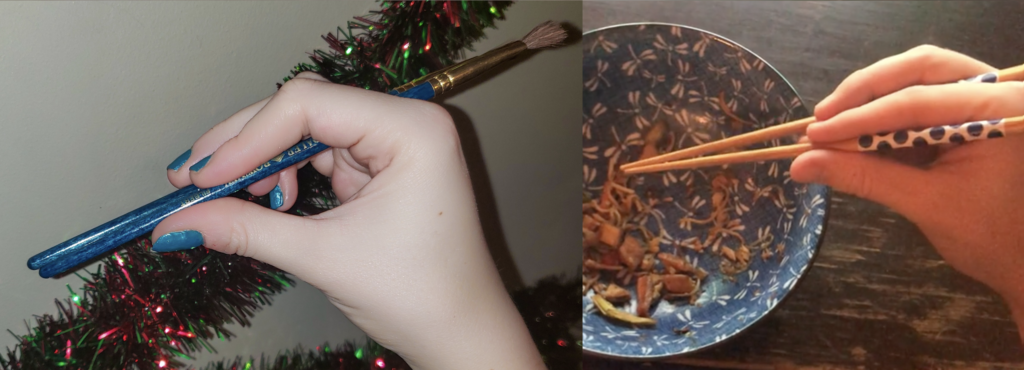
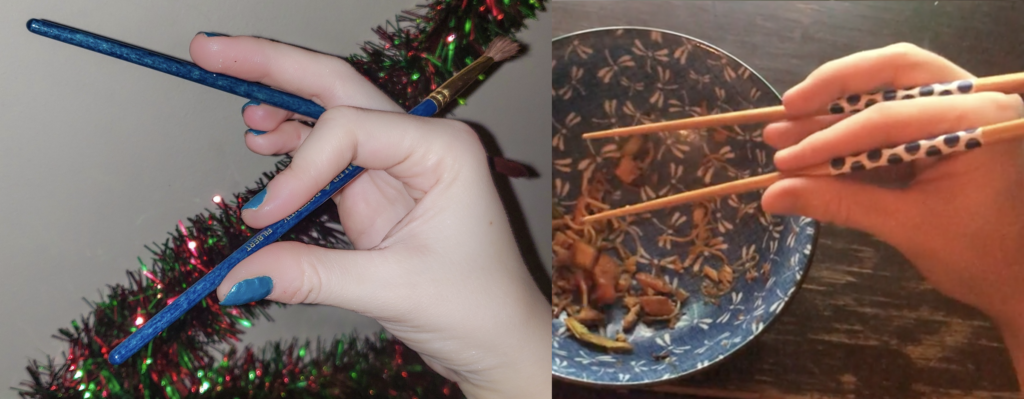
Following illustrate placement of the two chopsticks around the middle finger. The name refers to the Middle Path which is a term that Siddhartha Gautama used to describe the character of the path he discovered that leads to liberation.
Following show the closed posture and the open posture.
Next clip demonstrates the dexterity of this grip. Observe quick snaps shown below.
Next clip shows the user picking up a grape. This demonstrates both dexterity and finesse.
The last clip demonstrates the impressive range of chopstick extension. This is unlike Beetle Mandibles, with does suffer from a limited extension reach. Note that Middle Path and Beetle Mandibles use completely different finger dynamics for extending chopsticks, despite their visual similarities in the closed posture. Middle Path extend tips in the same plane as classic swing. Beetle Mandibles extend tips horizontally in its own unique ways.
Both Middle Path and Beetle Mandibles generate more compression power than most alternative grips. However, they both lack strong extension power (not to be confused with extension reach shown above).
Following is the stereotypical open posture of Middle Path seen from various angles.

Table of Contents
Taiwanese: 迎媽祖
This grip is known as 迎媽祖 (Ngiâ Má-chó͘) in Taiwanese. The “Middle Path” isn’t well-known in Taiwan. But the Dajia Mazu Pilgrimage is. This grip looks exactly like the litter carrying Mazu. Thus this Taiwanese name. And yes, we do know that this is a Taoist tradition, not a Buddhist tradition.
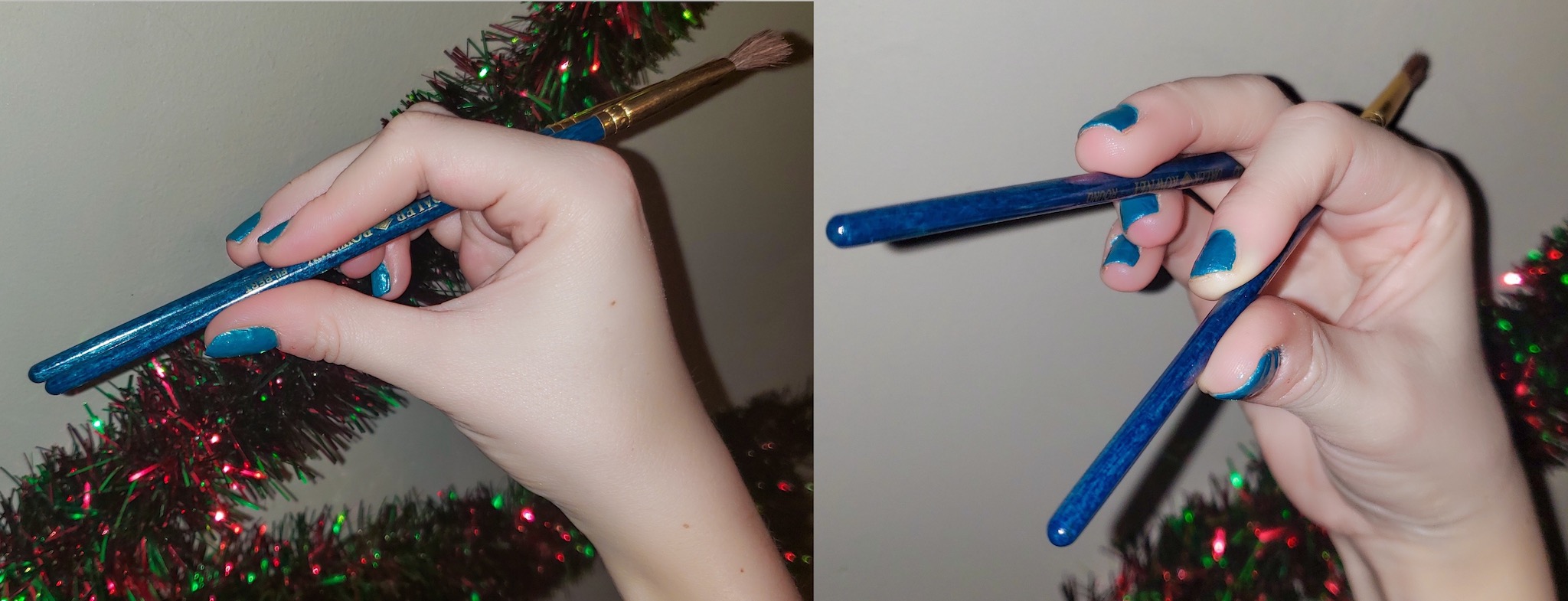


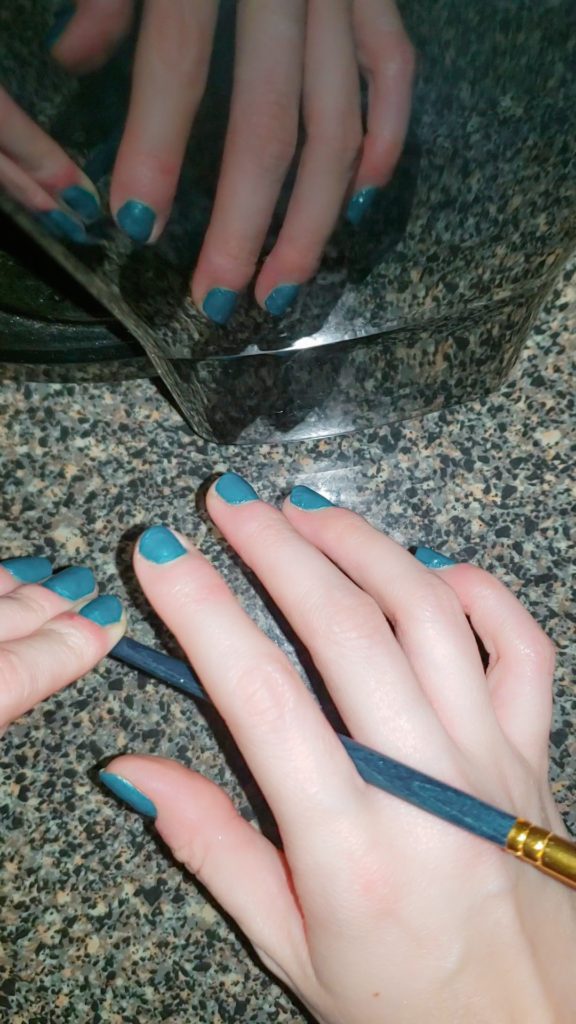

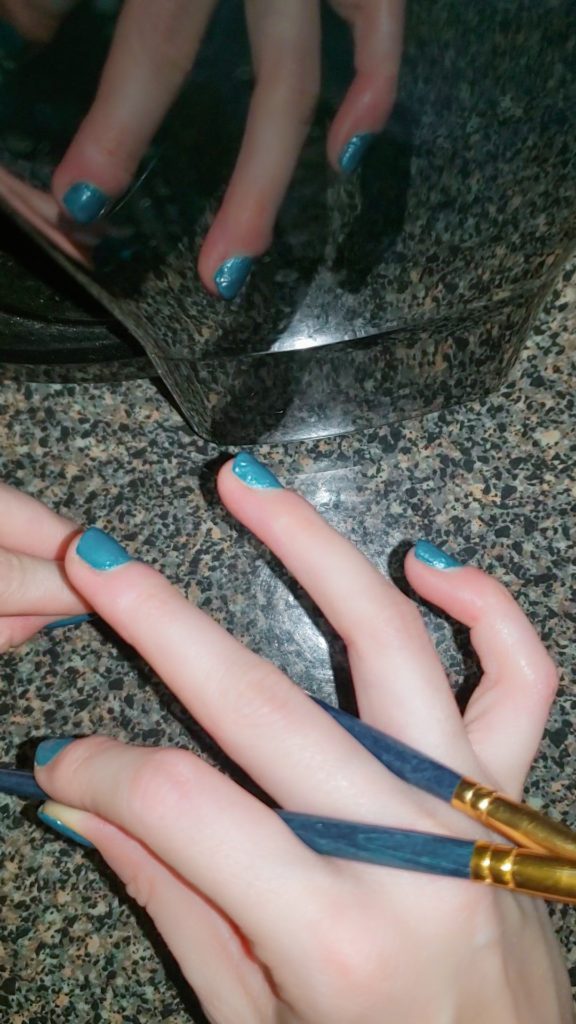
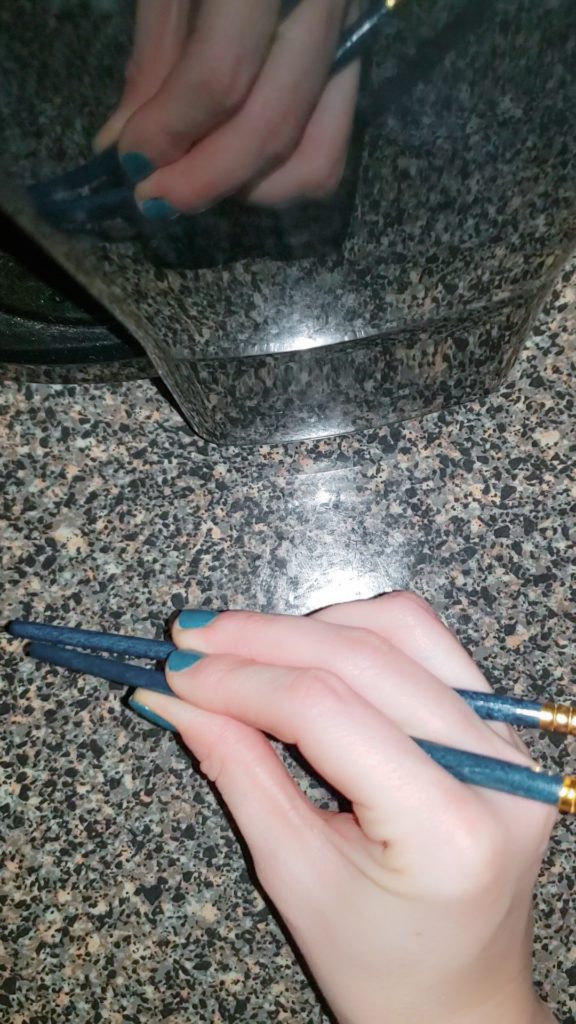
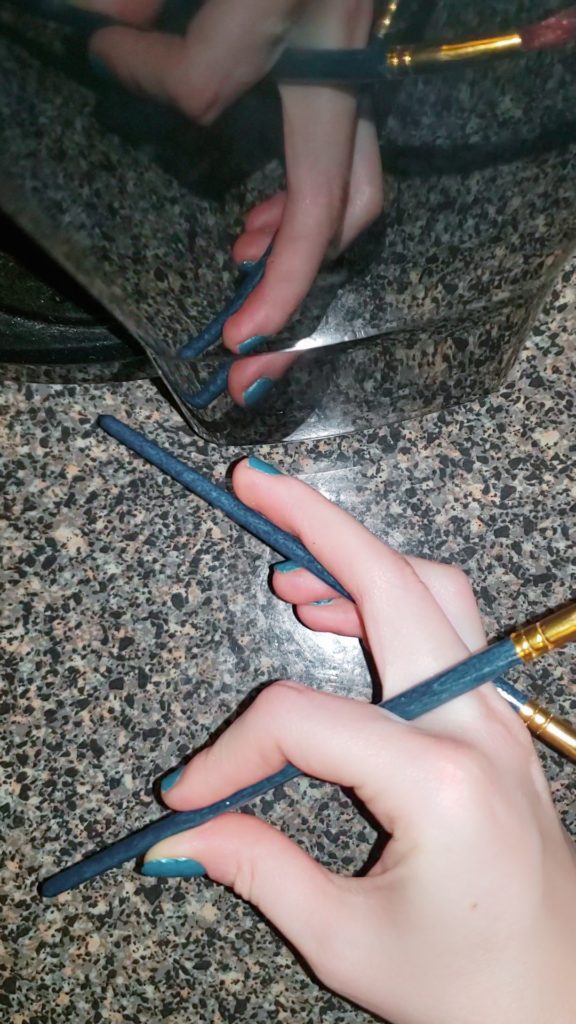
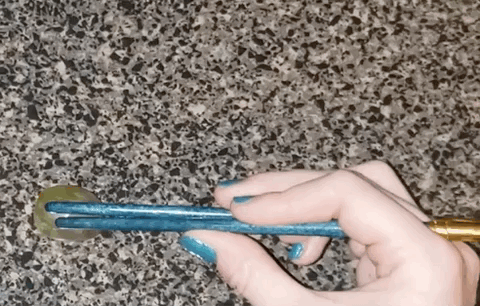
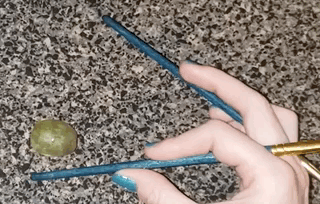
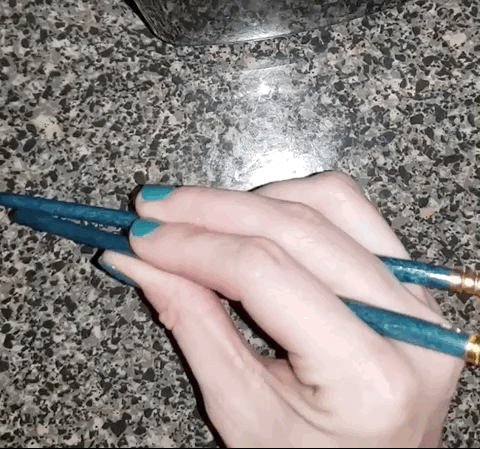
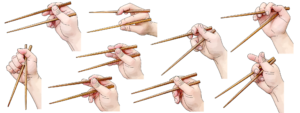

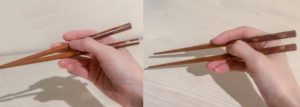
In the main poster (the one with most grips displayed) the names “Middle Path” and “Beetle Mandibles” are switched.
Can you please check?
Thanks
You are of course completely right. We owe you one. Sigh. Can’t believe no one pointed that out. For anyone else wondering about it, we are referring to this: https://marcosticks.org/catalog-common-chopstick-grips/. We’ll fix it shortly.
Hi,
I was desperately trying to find something online that validated my grip. My father thought me the “Middle Path” one… more than 40 years ago.
I never saw anyone else using it. I can use the traditional grip, but find the Middle Path more natural, maybe because it was the first.
But reading your website I have this doubt – are these “official” grips ?.. Or you have it there just because someone uses it?
My father spent some time in Macau (big Chinese influence there) when he was young.
Just want to understand if it was something that he used because someone else showed him. Or if it was just random.
Thanks
The short answer to your question is: there are no “official” namings of chopstick grips anywhere in the world since time immemorial, except for this website. No one has ever scientifically studied and classified chopstick grips, except us. So, take that for what it means. If you want to refer to specific chopstick grips, there are no other sources than this website. Perhaps this makes it official. Perhaps not. You can be the judge 🙂
Our view is, if more than one person adopts the same way to manipulate chopsticks, it is worth documenting. Many grips are really variants of more common grips. Deciding when something is a variant vs a named grip is a difficult job. What do you think?
The long answer: please see this essay: https://marcosticks.org/the-art-and-science-of-chopsticking/
Fascinating website! Thank you!